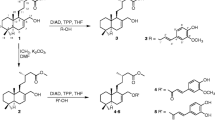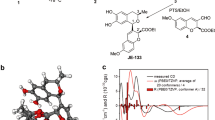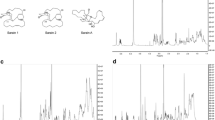Abstract
In our previous study, we found that caspase-dependent apoptosis played a role in the genesis of toxicity of acrylamide in human neuroblastoma (SH-SY5Y) cells (Sumizawa and Igisu in Arch Toxicol 81:279–282, 2007). In the present experiment, we examined whether carboxyfullerene may suppress the cytotoxicity of acrylamide because carboxyfullerene has been reported to protect nerve cells from various pathologic processes including apoptosis. Carboxyfullerene lowered lactate dehydrogense leakage and elevated cell viability in SH-SY5Y cells exposed to acrylamide. It also lowered caspase-3 activities and cell population in the sub-G1 phase induced by acrylamide. Nevertheless, carboxyfullerene enhanced cellular uptake of [14C]acrylamide. On the other hand, acrylamide markedly decreased glutathione (GSH)-content in cells and carboxyfullerene blocked the decrease. The toxicity of acrylamide was suppressed by adding GSH or GSH monoethyl ester, whereas it was not lowered by carboxyfullerene when GSH synthesis was inhibited by l-buthionine-(S,R)-sulfoximine. Thus, the cytotoxicity of acrylamide including apoptotic processes is closely related to GSH level in SH-SY5Y cells and carboxyfullerene suppresses the toxicity by maintaining GSH content. Neither tricarboxylic acids without fullerene moiety nor hydroxylated fullerene showed comparable effects of carboxyfullerene (60 μM) against 1–5 mM acrylamide, suggesting the importance of the three malonic acid groups at specific positions in a fullerene molecule for the effects.






Similar content being viewed by others
References
Ali SS, Hardt JI, Dugan LL (2008) SOD activity of carboxyfullerenes predicts their neuroprotective efficacy: a structure-activity study. Nanomedicine 4:283–294
Boettcher MI, Bolt HM, Angerer J (2006a) Acrylamide exposure via the diet: influence of fasting on urinary mercapturic acid metabolite excretion in humans. Arch Toxicol 80:817–819. doi:10.1007/s00204-006-0123-z
Boettcher MI, Bolt HM, Drexler H, Angerer J (2006b) Excretion of mercapturic acids of acrylamide and glycidamide in human urine after single oral administration of deuterium-labelled acrylamide. Arch Toxicol 80:55–61. doi:10.1007/s00204-005-0011-y
DeJongh J, Nordin-Andersson M, Ploeger BA, Forsby A (1999) Estimation of systemic toxicity of acrylamide by integration of in vitro toxicity data with kinetic simulations. Toxicol Appl Pharmacol 158:261–268. doi:10.1006/taap.1999.8670
Dugan LL, Turetsky DM, Du C, Lobner D, Wheeler M, Almli CR, Shen CK, Luh TY, Choi DW, Lin TS (1997) Carboxyfullerenes as neuroprotective agents. Proc Natl Acad Sci USA 94:9434–9439. doi:10.1073/pnas.94.17.9434
FAO/WHO (2002) Consultation on the Health Implications of Acrylamide in Food Geneva, 25–27 June 2002 Summary Report (http://www.who.int/foodsafety/publications/chem/acrylamide_june2002/en/)
Garland TO, Patterson MW (1967) Six cases of acrylamide poisoning. BMJ 4:134–138. doi:10.1136/bmj.4.5572.134
Ghanayem BI, McDaniel LP, Churchwell MI, Twaddle NC, Snyder R, Fennell TR, Doerge DR (2005) Role of CYP2E1 in the epoxidation of acrylamide to glycidamide and formation of DNA and hemoglobin adducts. Toxicol Sci 88:311–318. doi:10.1093/toxsci/kfi307
Ghibelli L, Fanelli C, Rotilio G, Lafavia E, Coppola S, Colussi C, Civitareale P, Ciriolo MR (1998) Rescue of cells from apoptosis by inhibition of active GSH extrusion. FASEB J 12:479–486
Hartley CL, Anderson VE, Anderton BH, Robertson J (1997) Acrylamide and 2, 5-hexanedione induce collapse of neurofilaments in SH-SY5Y human neuroblastoma cells to form perikaryal inclusion bodies. Neuropathol Appl Neurobiol 23:364–372. doi:10.1111/j.1365-2990.1997.tb01310.x
Huang YL, Shen CK, Luh TY, Yang HC, Hwang KC, Chou CK (1998) Blockage of apoptotic signaling of transforming growth factor-beta in human hepatoma cells by carboxyfullerene. Eur J Biochem 254:38–43. doi:10.1046/j.1432-1327.1998.2540038.x
Igisu H, Goto I, Kawamura Y, Kato M, Izumi K, Kuroiwa Y (1975) Acrylamide encephaloneuropathy due to well water pollution. J Neurol Neurosurg Psychiatry 38:581–584. doi:10.1136/jnnp.38.6.581
International Agency for Research on Cancer (1999) Monographs on the evaluation of carcinogenic risks to humans, vol 60. Some Industrial Chemicals Summary of Data Reported and Evaluation (http://monographs.iarc.fr/ENG/Monographs/vol60/volume60.pdf)
International Programme on Chemical Safety (1999) Poisons information monograph, vol 652. (http://www.inchem.org/documents/pims/chemical/pim652.htm)
Kotelnikova RA, Kotelnikov AI, Bogdanov GN, Romanova VS, Kuleshova EF, Parnes ZN, Vol’pin ME (1996) Membranotropic properties of the water soluble amino acid and peptide derivatives of fullerene C60. FEBS Lett 389:111–114. doi:10.1016/0014-5793(96)00537-6
Kroto HW, Heath JR, O’Brien SC, Curl RF, Smalley RE (1985) C60: Buckminsterfullerene. Nature 318:162–163. doi:10.1038/318162a0
Kuperman AS (1958) Effects of acrylamide on the central nervous system of the cat. J Pharmacol Exp Ther 123:180–192
Lin AM, Chyi BY, Wang SD, Yu HH, Kanakamma PP, Luh TY, Chou CK, Ho LT (1999) Carboxyfullerene prevents iron-induced oxidative stress in rat brain. J Neurochem 72:1634–1640. doi:10.1046/j.1471-4159.1999.721634.x
Lin AM, Fang SF, Lin SZ, Chou CK, Luh TY, Ho LT (2002) Local carboxyfullerene protects cortical infarction in rat brain. Neurosci Res 43:317–321. doi:10.1016/S0168-0102(02)00056-1
Lotharius J, Dugan LL, O’Malley KL (1999) Distinct mechanisms underlie neurotoxin-mediated cell death in cultured dopaminergic neurons. J Neurosci 19:1284–1293
McCollister DD, Oyen F, Rowe VK (1964) Toxicology of acrylamide. Toxicol Appl Pharmacol 6:172–181. doi:10.1016/0041-008X(64)90103-6
Monti D, Moretti L, Salvioli S, Straface E, Malorni W, Pellicciari R, Schettini G, Bisaglia M, Pincelli C, Fumelli C, Bonafè M, Franceschi C (2000) C60 carboxyfullerene exerts a protective activity against oxidative stress-induced apoptosis in human peripheral blood mononuclear cells. Biochem Biophys Res Commun 277:711–717. doi:10.1006/bbrc.2000.3715
Mottram DS, Wedzicha BL, Dodson AT (2002) Acrylamide is formed in the Maillard reaction. Nature 419:448–449. doi:10.1038/419448a
Oberdörster E (2004) Manufactured nanomaterials (fullerenes, C60) induce oxidative stress in the brain of juvenile largemouth bass. Environ Health Perspect 112:1058–1062
Okuno T, Matsuoka M, Sumizawa T, Igisu H (2006) Involvement of the extracellular signal-regulated protein kinase pathway in phosphorylation of p53 protein and exerting cytotoxicity in human neuroblastoma cells (SH-SY5Y) exposed to acrylamide. Arch Toxicol 80:146–153. doi:10.1007/s00204-005-0022-8
Stadler RH, Blank I, Varga N, Robert F, Hau J, Guy PA, Robert MC, Riediker S (2002) Acrylamide from Maillard reaction products. Nature 419:449–450. doi:10.1038/419449a
Sumizawa T, Igisu H (2007) Apoptosis induced by acrylamide in SH-SY5Y cells. Arch Toxicol 81:279–282. doi:10.1007/s00204-006-0145-6
Sumizawa T, Igisu H (2008) Release of heat shock proteins from human neuroblastoma cells exposed to acrylamide. J Toxicol Sci 33:117–122. doi:10.2131/jts.33.117
Tanii H, Miki N, Hayashi M, Hashimoto K (1988) Cytotoxicity of acrylamide and related compounds to mouse neuroblastoma and rat schwannoma cells. Arch Toxicol 61:298–305. doi:10.1007/BF00364853
Yamago S, Tokuyama H, Nakamura E, Kikuchi K, Kananishi S, Sueki K, Nakahara H, Enomoto S, Ambe F (1995) In vivo biological behavior of a water-miscible fullerene: 14C labeling, absorption, distribution, excretion and acute toxicity. Chem Biol 2:385–389. doi:10.1016/1074-5521(95)90219-8
Acknowledgments
This work was supported in part by Grant-in-Aid for Scientific Research from the Ministry of Education, Culture, Sports, Science and Technology, Japan, and by a UOEH Grant for Advanced Research.
Author information
Authors and Affiliations
Corresponding author
Rights and permissions
About this article
Cite this article
Sumizawa, T., Igisu, H. Suppression of acrylamide toxicity by carboxyfullerene in human neuroblastoma cells in vitro. Arch Toxicol 83, 817–824 (2009). https://doi.org/10.1007/s00204-009-0438-7
Received:
Accepted:
Published:
Issue Date:
DOI: https://doi.org/10.1007/s00204-009-0438-7




